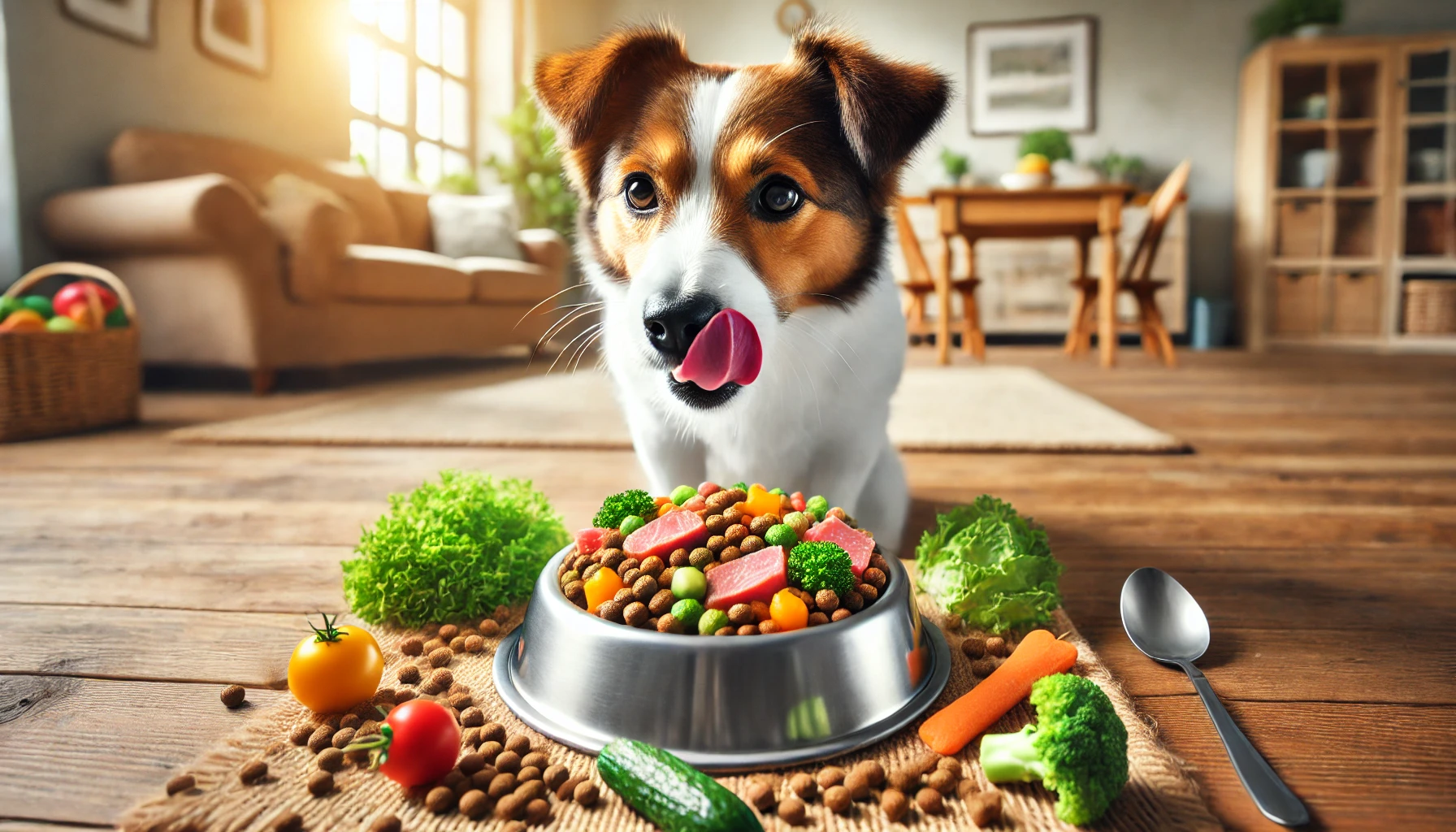A proper diet is essential for maintaining the health and well-being of your dog, regardless of its breed. Each dog has unique nutritional needs, but some universal principles apply to all canines. By understanding the right food choices, portion control, and feeding habits, you can help your furry friend live a long, happy, and healthy life.
1. Understanding the Nutritional Needs of Dogs
Dogs require a balanced diet that includes essential nutrients such as:
- Proteins: Vital for muscle growth and repair. High-quality protein sources include chicken, beef, fish, and eggs.
- Fats: Provide energy and support skin and coat health. Healthy fats come from fish oil, flaxseed, and chicken fat.
- Carbohydrates: Supply energy and aid digestion. Good sources include sweet potatoes, brown rice, and whole grains.
- Vitamins and Minerals: Essential for immune function, bone health, and overall vitality. Fruits, vegetables, and specially formulated dog foods contain these nutrients.
- Water: Often overlooked, hydration is crucial for digestion, circulation, and temperature regulation. Always ensure your dog has access to clean, fresh water.
2. Choosing the Right Food for Your Dog
The right food depends on factors such as breed, size, age, and activity level. Here are some guidelines:
Puppies vs. Adults vs. Seniors
- Puppies: Need a high-calorie diet rich in proteins and fats to support growth. Choose puppy-formulated food.
- Adult Dogs: Require balanced maintenance diets with moderate protein and fat levels.
- Senior Dogs: Benefit from lower-calorie food with added joint-supporting ingredients like glucosamine.
Small vs. Large Breeds
- Small Breeds: Have fast metabolisms and may require energy-dense food in smaller portions.
- Large Breeds: Need food that supports joint health and prevents rapid weight gain, which can cause stress on their joints.
3. Understanding Commercial Dog Food Labels
When selecting commercial dog food, it’s essential to read the labels carefully. Look for:
- High-Quality Protein Sources: The first ingredient should be real meat (e.g., chicken, beef, fish).
- No Artificial Additives: Avoid foods with artificial colors, flavors, and preservatives.
- Essential Nutrients: Ensure the food contains omega-3 and omega-6 fatty acids, fiber, and probiotics.
- AAFCO Certification: The Association of American Feed Control Officials (AAFCO) regulates pet food to ensure it meets nutritional standards.
4. The Benefits of a Homemade Diet
Some pet owners prefer homemade diets to have full control over their dog’s nutrition. While this can be beneficial, it’s important to:
- Consult a Veterinarian: Ensure the diet meets all nutritional requirements.
- Include a Protein Source: Lean meats like chicken, turkey, and fish are great options.
- Add Vegetables: Carrots, peas, spinach, and pumpkin provide vitamins and fiber.
- Use Healthy Fats: Olive oil, flaxseed, and fish oil promote a shiny coat and healthy skin.
- Supplement if Necessary: Some homemade diets lack essential nutrients, requiring vitamin or mineral supplements.
5. Foods That Are Toxic to Dogs
Certain human foods can be harmful or even fatal to dogs. Avoid giving them:
- Chocolate: Contains theobromine, which is toxic to dogs.
- Onions and Garlic: Can cause anemia by damaging red blood cells.
- Grapes and Raisins: May lead to kidney failure.
- Xylitol (Artificial Sweetener): Found in sugar-free gum and sweets, it can cause dangerous drops in blood sugar.
- Cooked Bones: Can splinter and cause digestive blockages or injuries.
6. Portion Control and Feeding Schedule
Feeding the right amount is just as important as choosing the right food. Overfeeding can lead to obesity, while underfeeding can cause malnutrition. Consider these guidelines:
- Follow Feeding Recommendations: Check the food packaging for portion guidelines based on weight and activity level.
- Monitor Your Dog’s Body Condition: A visible waist and ribs that can be felt (but not seen) indicate a healthy weight.
- Feed at Consistent Times: Most adult dogs do well with two meals a day, while puppies may need three to four.
7. Special Dietary Needs and Allergies
Some dogs have food sensitivities or medical conditions that require special diets:
- Allergies: Symptoms include itching, ear infections, and digestive issues. Common allergens include chicken, beef, dairy, and wheat. Hypoallergenic dog foods with novel proteins like duck or venison can help.
- Weight Management: Overweight dogs may need lower-calorie food with high fiber content.
- Joint Health: Large breeds and senior dogs benefit from foods with glucosamine and chondroitin.
- Sensitive Stomachs: Some dogs do better with limited-ingredient diets or easily digestible ingredients like rice and lamb.
8. Hydration and Treats
Hydration
Water is essential for digestion, circulation, and overall health. Always provide fresh, clean water, especially after exercise or in hot weather.
Healthy Treat Options
Treats should make up no more than 10% of your dog’s daily calorie intake. Opt for:
- Fresh fruits (apples, blueberries, watermelon – without seeds)
- Vegetables (carrots, green beans)
- Lean, cooked meats (without seasoning)
9. Transitioning to a New Diet
If you need to switch your dog’s food, do so gradually over 7–10 days to prevent digestive issues:
- Days 1-3: 75% old food, 25% new food
- Days 4-6: 50% old food, 50% new food
- Days 7-9: 25% old food, 75% new food
- Day 10: 100% new food
Final Thoughts
A well-balanced diet is key to your dog’s long-term health and happiness. By choosing high-quality food, monitoring portion sizes, and addressing individual dietary needs, you can ensure your furry friend thrives. Always consult your veterinarian before making significant dietary changes, and remember that a healthy dog is a happy dog!

13 thoughts on “How to Ensure a Healthy Diet for Dogs of All Breeds”